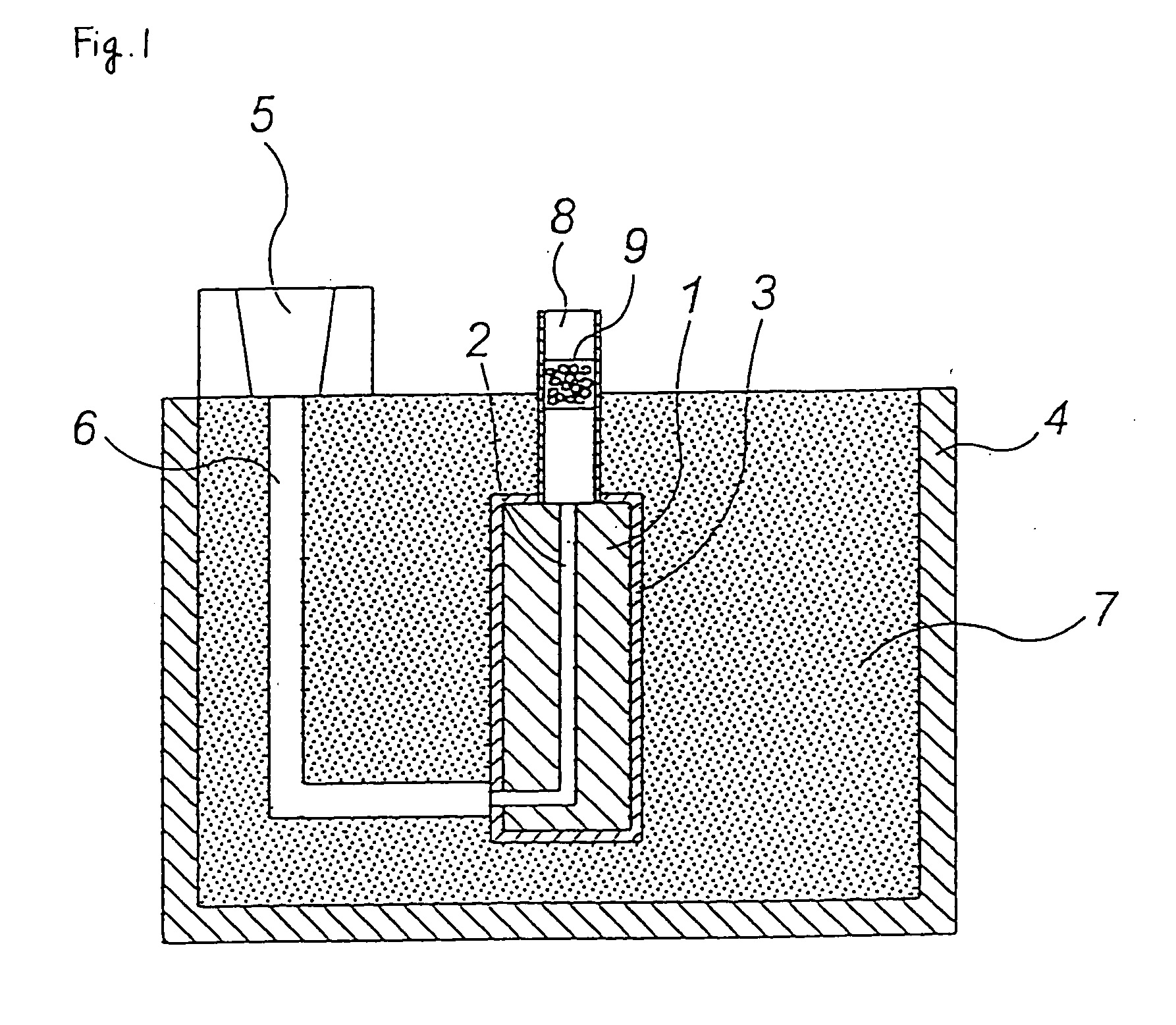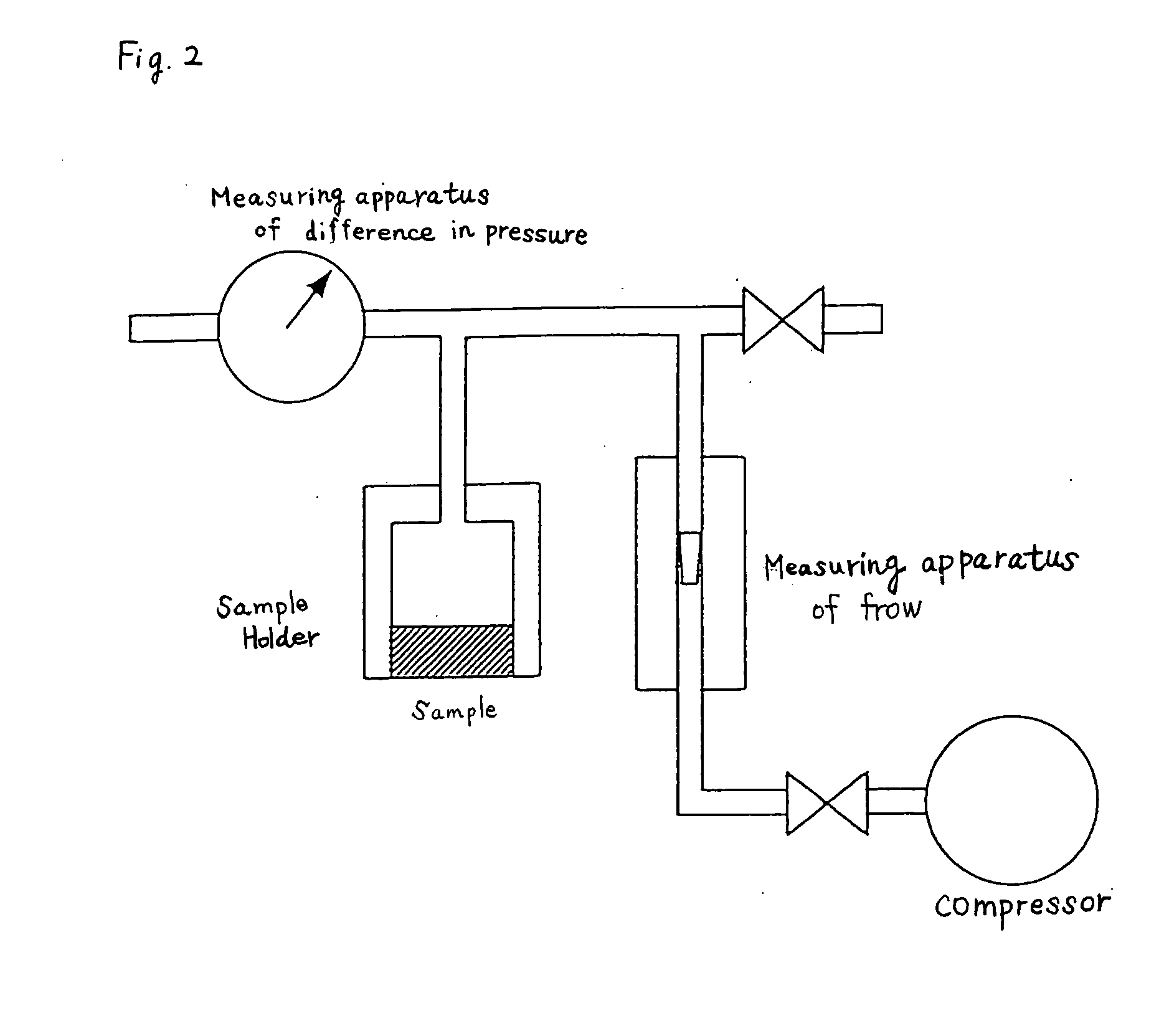Sublimation pattern casting method
- Summary
- Abstract
- Description
- Claims
- Application Information
AI Technical Summary
Benefits of technology
Problems solved by technology
Method used
Image
Examples
example 1
[0032] A through-hole 2 was formed in a 120 mm.times.80 mm.times.250 mm-H foamed pattern 1 (made of an expanded polystyrene) by using a heated metal bar having a diameter of 3 mm as shown in FIG. 1. The diameter of the through-hole was about 4 mm.
[0033] A 2-mm-diameter spherical alumina 9 mixed with an ester-curable phenol resin was filled in a 4-cm-diameter cylindrical ceramic tube (length: 30 cm) such that the thickness (h) of alumina 9 in layer was 2.5 cm and cured, to form an exhausting path 8.
[0034] With regard to this exhausting path 8, pressure loss P was measured as shown in FIG. 2. As a result, P=0.02 g / cm.sup.2 when air ventilation rate was 1 L / min., P=0.08 g / cm.sup.2 when air ventilation rate was 3 L / min. and P=0.15 g / cm.sup.2 when air ventilation rate was 5 L / min. In this example, pouring time (t) was set to 10 seconds and therefore the quantity of gas to be exhausted was about 172 L / min. The first pressure loss was 6 g / cm.sup.2 when the quantity of gas was 172 L / min.
[00...
examples 2 to 4
[0041] A casting operation was carried out in the same manner as in Example 1 except that the pouring time, the pressure loss and the degree of ventilation in the exhaust gas-controlling means were changed as shown in Table 1 and the same evaluation as in Example 1 was made. The results are shown in Table 1.
[0042] In Example 2, spherical alumina 0.5 mm in diameter was filled such that the thickness of the alumina layer was 2 cm. The pressure loss P in the exhausting path was as follows: P=0.47 g / cm when air ventilation rate was 1 L / min., P=1.41 g / cm.sup.2 g / cm when air ventilation rate was 3 L / min. and P=2.36 g / cm.sup.2 when air ventilation rate was 5 L / min.
[0043] Also, in Example 3, spherical alumina 5 mm in diameter was filled such that the thickness of the alumina layer was 2 cm. The pressure loss P in the exhausting path was as follows: P=0.0033 g / cm when air ventilation rate was 1 L / min., P=0.0099 g / cm.sup.2 when air ventilation rate was 3 L / min. and P=0.0165 g / cm.sup.2 when ai...
example 5
[0045] A casting operation was carried out in the same manner as in Example 1 except that a stainless fine tube having an inside diameter of 8.8 mm and a length of 600 mm was used as the exhaust gas-controlling means and no exhausting path was not installed (the fine tube is used as the exhausting path, too), and the same evaluation as in Example 1 was made. The fine tube was disposed in such a manner as to be communicated with the through-hole of the model. The pressure loss P in the exhausting path was as follows: P=0.02 g / cm.sup.2 when air ventilation rate was 1 L / min., P=0.09 g / cm.sup.2 when air ventilation rate was 3 L / min. and P=0.16 g / cm.sup.2 when air ventilation rate was 5 L / min. The results are shown in Table 1.
PUM
 Login to View More
Login to View More Abstract
Description
Claims
Application Information
 Login to View More
Login to View More - R&D
- Intellectual Property
- Life Sciences
- Materials
- Tech Scout
- Unparalleled Data Quality
- Higher Quality Content
- 60% Fewer Hallucinations
Browse by: Latest US Patents, China's latest patents, Technical Efficacy Thesaurus, Application Domain, Technology Topic, Popular Technical Reports.
© 2025 PatSnap. All rights reserved.Legal|Privacy policy|Modern Slavery Act Transparency Statement|Sitemap|About US| Contact US: help@patsnap.com



